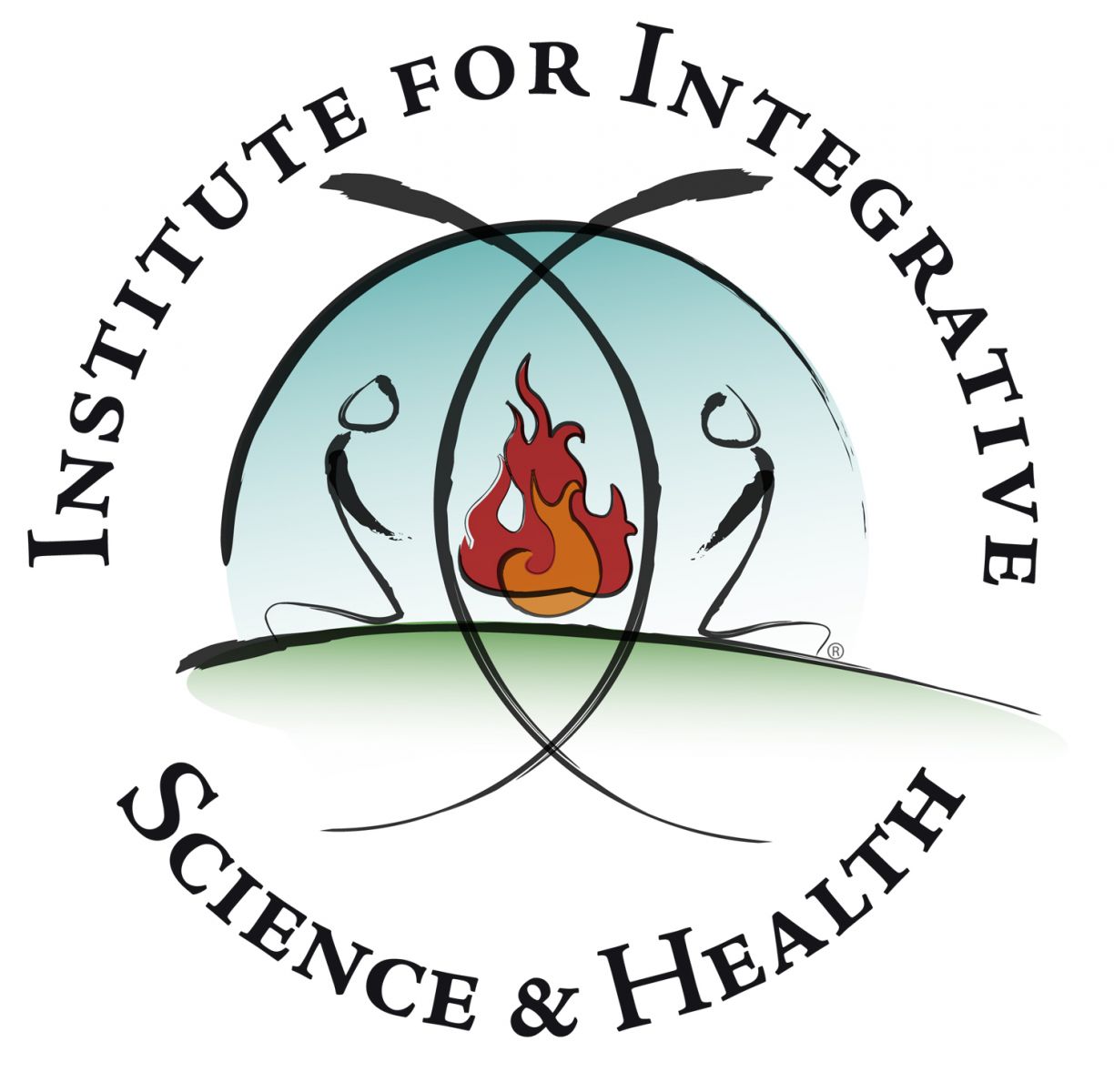Vision
 Our vision for Integrative Science also defines Integrative Science.
Our vision for Integrative Science also defines Integrative Science.
Our vision is: bringing together Indigenous and Western scientific knowledges and ways of knowing – for science education, science research, science applications, and science outreach to youth and community.
We asked artist Basma Kavanagh to portray our vision and she did so in a painting using mixed media that you can see on the right hand side of this page.
Basma's painting depicts the cosmos, a sacred fire, and two people who face each other, one directly across from the other. They overlook the fire while kneeling on a surface of nourishing green. We note that kneeling is an action that places a person in a position of offering trust and also inviting trust because it is a position of extreme vulnerability. Trust, in turn, enables sharing and co-learning of deep level thoughts about actions, values, and knowledges. Through these mindful intentions, the two people bring together the spheres of their respective worldviews of Indigenous and Western sciences. By way of sharing their understandings and learning from and with each other, they seek to generate an expanding ground of common understanding and a deepening respect for differences … to help enable our collective talking and walking ... our living and working together on Mother Earth.
Basma’s painting further helps convey the understanding that “only when knowledge is conditioned by respect can it be truly shared” (in Mi’kmaq: “Ta’n tujiw kjijitaqn tela’tasik kepne’ktn ketloqo kisiktpi’tasitew”). In the painting, the whole of this effort can be seen to be held in the talons of Eagle, a spiritual guide for many Indigenous Peoples.
Our vision for Integrative Science acknowledges diverse Indigenous Knowledges around the world. Our primary home is with the M’kmaw First Nations in Unama'ki - Cape Breton, Nova Scotia, Canada, and from here we reach out to other Aboriginal / Indigenous peoples in Atlantic Canada, across Canada, and beyond. Researchers at the Institute for Integrative Science & Health at Cape Breton University network with scientists and other academic colleagues locally and across Canada. In this way, our efforts in Integrative Science are transcultural and multi-cultural, as well as transdisciplinary and multi-disciplinary.
The activities that we undertake, towards realizing our vision for Integrative Science, are guided by Elders’ wisdom. For example, Two-Eyed Seeing as brought forward by Mi’kmaw Elder and Honorary Doctorate of Letters Albert Marshall encourages us to learn to see from one eye with the strengths of Indigenous knowledges and ways of knowing and to learn to see from the other eye with the strengths of Western knowledges and ways of knowing ... and to learn to use both these eyes together, for the benefit of all.
